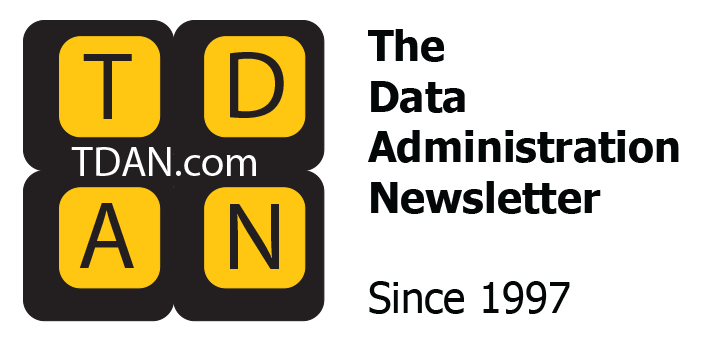
According to the authors of “Data Is Everybody’s Business,” a data strategy “lays out an organization’s goals and plans for managing and exploiting data.” So, where are chief information officers (CIOs) at in facilitating a data strategy with their business counterparts? What things get in the way the most? And, of course, what advice do they have for data professionals? I spoke with data professionals at #CIOChat to find out.
What Challenges Does a Data Strategy Need to Overcome?
What challenges must a data strategy overcome: Creating a data culture? Building the data business case? Or fixing data issues? Martin Davis, CIO of Southern Company, said, “It is all of those, but it starts with data ownership. Once you have the right business ownership, you can work on the culture, the business case, and other things.”
Jim Russell, CIO for Manhattanville College, claimed that with ownership established, “What most organizations are lacking are foundational skills in the workforce. As competing knowledge requirements have intensified, fewer employees seem to have data literacy or data fluency. For this reason, I’ve been pushing data literacy as a foundational requirement with expertise resulting in data fluency which means different things in different campus communities. But I find that data governance stalls eventually if there isn’t an escalation effort to raise everyone’s boat.”
With data literacy addressed, Smart Manufacturing CIO Joanne Friedman said that for the overwhelming amount of data that has been and continues to be collected, the challenges are as follows:
- Retrofitting the data strategy
- Auditing existing data for value-add or no value-add
- Committing leadership to data strategy
- Establishing a data governance framework
Fixing these issues, said Constellation Research VP Dion Hinchcliffe, “involves getting stakeholder involvement, creating meaningful, actionable, sustainable plans; gaining buy-in plus effective governance; and accelerating soon enough to not be seen as creating organizational friction.”
Defining and Prioritizing Data Use Cases
Hinchcliffe believes CIOs and data leaders should “prioritize use cases and business opportunities for data.” These should be in this order:
- Mostly horizontal, foundational use cases
- Most impactful, mission-centric use cases
- Most strategic future-potential opportunities
Friedman agreed and said, “Base decisions on the data’s contribution to corporate value. In other words, its efficacy in cost or operational efficiency, or contribution to corporate resiliency, innovation, growth, or revenue creation.”
Given this, Davis said, “Start with contribution to business value, and then overlay with speed to value, in order to prioritize. IT and the CIOs can act as a facilitator, but the business has to step up and own appropriate areas of the data.” To make this work, Russell said, “Communications need to be nuanced. They should present strategic versus tactical use cases. Clearly, an urgent business need or a receptive partner builds the value proposition faster.”
Organize Data to Deliver on the Data Strategy?
Here, I wanted to understand what best practices make the most sense to apply to data. Friedman took this question, however, in a slightly different direction. She suggested, “Today, manufacturing data is the product and the goods manufactured are simply the means of facilitation. We no longer sell widgets; we sell the experiences. Therefore, I would say CIOs should embrace the paradigm for continuous value delivery.” I was not surprised about this perspective because in the book, “Future Ready,” the authors tell the story of CEMEX. Apparently, CEMEX customers wanted to order via an app with a digital customer experience.
Obviously, a smart data strategy comes from business and digital strategy. For this reason, Russell said, “It is important to start with a common vision that spans data products and services. With this, CIOs should help teams define vision and create clear scaffolding (policies, vision, guided action plans, metrics, etc.) that overarching vision. With this, CIOs and data leaders should educate, educate, and educate.”
Davis agreed and said, “Start with a defined strategy and agreed goals, put in place the necessary resources and approaches for success, align the stakeholders to these. Make sure to identify and agree on the critical things such as how you will define data provenance and governance.” In terms of organization, Hinchcliffe suggested that increasing “data should be organized under a CDAO, use product management for multi-use datasets, use symmetric self-service for scale and reuse (APIs, shared data lakes, AI models, etc.), and kill data fiefdoms.”
What Technology Issues Need to Be Overcome
What are the issues to be overcome to deliver on a data strategy? Is it architecture? Data pipelines? Data quality? Or a single view of? Friedman said “I believe that we need to rethink who the consumer of the data is. Is it human, machine, cobot, robot, model, ML, or AI? With this, we need to consider technical issues to get there. This includes the use of the metadata/dark data, data fabrics, and virtualization. This includes emerging architectural models: distributed, Web3, and metaverse edge architectures. And with this data quality — how do we get garbage-free data?”
For Hinchcliffe, the tech issues that must be overcome for a successful data strategy include:
- Technical debt/data debt
- Data foundation and platform
- Closed SaaS
- Master data that works
- Tech adoption
Hinchcliffe continued by saying, “I once worked as an integration architect for a major insurance company that had 12 different claim databases. The root of so many long-term issues.” Davis concluded by agreeing with Hinchcliffe. “The mess of technical debt and associated ‘data debt’ without which you will fail.”
Parting Words
Without question, a data strategy is critical to achieving business goals. To achieve it, organizations need to worry about people, process, and technology in that order. Clearly, there are technology issues to overcome, but business alignment must be solved first to achieve lasting business impact.
Image used under license from Shutterstock.com
